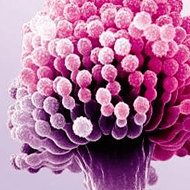Phospholipid powder quotation, improve the absorption and utilization efficiency
Time:2025-04-11The following are some methods to improve the absorption and utilization efficiency of phospholipids by adjusting food formulas:
Matching with Appropriate Oils: Phospholipids are fat-soluble substances. When ingested together with oils, the oils can promote the emulsification and dispersion of phospholipids in the gastrointestinal tract, which is beneficial for their absorption. For example, adding an appropriate amount of unsaturated fatty acids to foods, such as oils rich in monounsaturated and polyunsaturated fatty acids like olive oil and fish oil, may be more conducive to the absorption of phospholipids than saturated fatty acids. This is because unsaturated fatty acids have good fluidity and emulsifying properties, which can help form smaller fat droplets and increase the contact area between phospholipids and digestive enzymes.
Adding Emulsifiers: Emulsifiers can reduce the surface tension at the oil-water interface, enabling phospholipids to disperse better in the aqueous phase system and form a stable emulsion. Commonly used emulsifiers include sucrose fatty acid esters and polyglycerol fatty acid esters. They can interact with phospholipids, improving the solubility and dispersibility of phospholipids, thereby enhancing their absorption efficiency in the gastrointestinal tract. For example, adding an appropriate amount of emulsifiers to foods such as milk beverages or sauces helps phospholipids to be evenly distributed in the products and makes them more easily absorbed during the digestion process.
Increasing the Protein Content: Proteins can form complexes with phospholipids, and such complexes have better stability and solubility in the gastrointestinal tract. For example, in soybean products, soybean protein and soybean phospholipids naturally coexist, and their interaction is beneficial for improving the absorption and utilization rate of phospholipids. In addition, adding protein sources such as whey protein and collagen to some food formulas may also improve the absorption of phospholipids through binding with them.
Adjusting the pH Value: The pH value of the gastrointestinal tract has a certain influence on the absorption of phospholipids. In an acidic environment, phospholipids may undergo partial hydrolysis to generate more easily absorbed products such as lysophospholipids. Therefore, in some food formulas, the pH value can be appropriately adjusted to a weakly acidic level to promote the hydrolysis and absorption of phospholipids. For example, in acidic foods such as yogurt, the absorption of phospholipids may be relatively good. However, it should be noted that the adjustment of the pH value should be within the acceptable range of the food, and the impact on other components and taste should also be considered.
Adding Vitamins and Minerals: Certain vitamins and minerals may play a promoting role in the absorption and utilization of phospholipids. For example, when fat-soluble vitamins such as vitamin A, vitamin D, and vitamin E are ingested together with phospholipids, they may use the same absorption pathway and promote each other's absorption. Minerals such as calcium and magnesium may also interact with phospholipids, affecting their solubility and absorption in the gastrointestinal tract. For example, an appropriate amount of calcium can form a complex with phospholipids, which helps with the stability and absorption of phospholipids in the intestine. Therefore, rationally adding these vitamins and minerals to food formulas helps to improve the absorption and utilization efficiency of phospholipids.


 CN
CN





